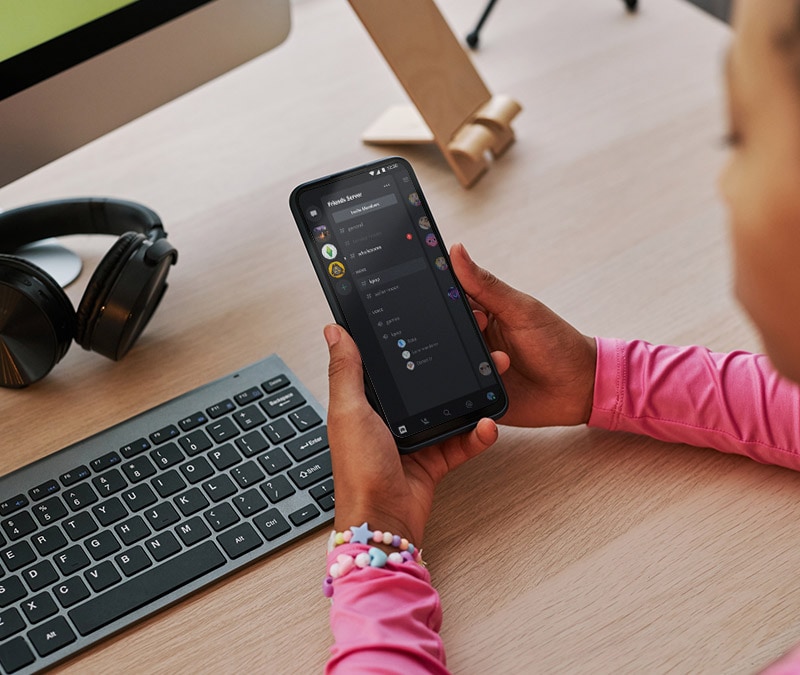Is Snapchat safe for kids? Here's how to keep them protected
Trendy social media apps are nothing new—and each one comes with its own set of risks. While this can seem daunting to some parents, here’s what you can do to help keep your children Cyber Safe while using Snapchat.

Snapchat has had a bit of a renaissance. The app has experienced consistent user growth and has become the app of choice for many influencers who use it to engage with their audience and livestream their daily life. Snapchat is trending with both users and creators, so it’s no wonder that kids are also interested.
With its rapidly changing filters, Snapstreaks, and interactive features, Snapchat is immensely popular among many teens and preteens. While it's a fun way to communicate, it's crucial to ensure kids use it safely.
What is Snapchat and how does it even work?
Snapchat is a multimedia messaging app where photos and videos, known as "Snaps," disappear after being viewed. It’s a platform that encourages creativity and spontaneity with several engaging features.
- Snapchat age requirement: Users must be at least 13 years old to create an account.
- Snap Map: This feature allows users to share their location with friends on a map, which can require proper management to protect their privacy.
- Face filters: These are augmented reality overlays that transform photos, adding fun elements like dog ears or flower crowns.
- Snapstreaks: A Snapstreak occurs when two friends send snaps back and forth for consecutive days, encouraging regular use.
- Stories and Spotlights: Users can post photos and videos to their "Story" or the "Spotlight" section, which is visible to friends or a broader audience for 24 hours.
- Discover and Geofilters: Discover offers content from publishers, while Geofilters are location-specific overlays available for Snaps.
- Snapcode and My Eyes Only: Snapcodes are unique, scannable codes for sharing profiles. "My Eyes Only" is a private space for storing sensitive snaps.
Is my child safe on Snapchat?
The question many parents ask is, “Is Snapchat safe for my teen?” The app requires users to be at least 13, but doesn’t require age verification. For older teens, the risks are similar—particluarly on privacy and exposure to inappropriate content. Snapchat does offer parental tools that may be helpful, such as allowing parents to view with who their kids are friends with. However, Snapchat's age requirement doesn't entirely shield young users from potential dangers.
Parents and guardians must stay informed about Snapchat's evolving features. By understanding these, adults can better guide their children toward safe usage, ensuring they enjoy the app's benefits without compromising safety.
What are the risks of using Snapchat?
While Snapchat offers fun and engaging ways to connect, it also presents several risks:
- Anyone can request to connect. Strangers can send friend requests, posing a risk of unwanted interactions.
- Location data can be shared. If Snap Map is active, users' exact locations can be visible to all their friends.
- Exposure to inappropriate content. Discover and Stories may include content not suitable for younger audiences.
- Images and videos can be saved. Despite disappearing Snaps, screenshots or third-party apps can save them, risking unwanted sharing.
Understanding these risks is essential for making informed decisions about Snapchat usage.
How parents can make Snapchat safer for teens
Ensuring Snapchat safety involves proactive measures. Here are steps parents can take to protect their children:
1. Help your teen set up their account.
Start by confirming they meet the Snapchat age requirement. Choose an appropriate screen name that doesn't reveal personal information. This foundation sets the tone for a safer experience.
2. Adjust their privacy settings.
Privacy settings are crucial. Disable location sharing on Snap Map and restrict who can view your teen’s Stories. Limiting interaction to known friends reduces exposure to strangers.
3. Review their friend list.
Regularly reviewing your teen's friend list helps ensure they're connected only with people they know. Encourage open discussions about their online interactions.
4. Monitor their usage with Family Center.
Snapchat's Family Center allows parents to monitor their child's activity. This feature provides insights into what they're sending without invading their privacy.
5. Restrict their access to certain times.
Encourage healthy screen time habits by setting boundaries. Restricting Snapchat use at night helps prevent disruptions to their sleep and overall well-being.
6. Show your teen how to report content.
Teach your child how to block and report explicit content. Empower them to take control of their digital environment and make responsible choices.
7. Teach your children about the dangers of social media.
Communication is key. Discuss the risks of predators and inappropriate content. Encourage them to approach you with any concerns, fostering trust and openness.
Not a snap decision
Determining whether Snapchat is safe for kids depends on a combination of education and precaution. The app allows parents to see who their child is friends with, who they have messaged and the ability to restrict content. By actively engaging in your child's digital life, you can help create a safer online environment. Remember, you don't have to do it alone. There are resources and tools available to guide you.
FAQs about Snapchat for kids
How old do you have to be to get Snapchat?
The minimum age requirement for Snapchat is 13 years old.
Is Snapchat safe for 11- and 12-year-olds?
No, Snapchat is not recommended for 11 and 12-year-olds due to its age restriction and content challenges.
Is Snapchat good or bad for kids?
Snapchat can be both entertaining and risky. Its suitability depends on parental oversight and open communication about its use.
By understanding Snapchat's features and potential risks, you can help your child enjoy social media safely. Consider taking additional steps, like exploring parental control options or consulting experts, to enhance your approach to digital parenting.
Editorial note: Our articles provide educational information for you. Our offerings may not cover or protect against every type of crime, fraud, or threat we write about. Our goal is to increase awareness about Cyber Safety. Please review complete Terms during enrollment or setup. Remember that no one can prevent all identity theft or cybercrime, and that LifeLock does not monitor all transactions at all businesses. The Norton and LifeLock brands are part of Gen Digital Inc.





Want more?
Follow us for all the latest news, tips, and updates.